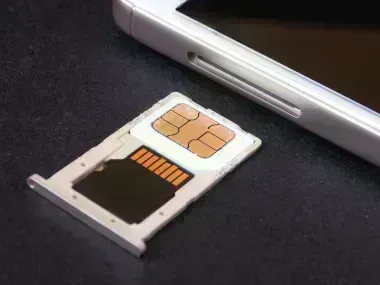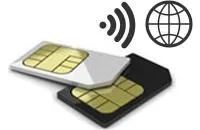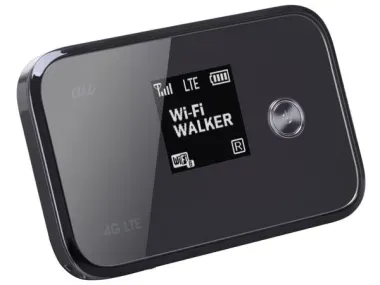Why you should get a SIM Card when traveling to Japan
- Published on : 17/06/2025
- by : Joshua
- Youtube
Prepaid SIM cards allow for high-speed data usage during travels to Japan and is one of the best way to access internet.
What is a Short-Term Japanese SIM Card?
A Subscriber Identity Module (SIM) card is a standard part of any cellular mobile device and allows said device to connect to a network for usage. Oftentimes, visitors to Japan will look into purchasing a temporary SIM card for using international phone data prior to their trip.
For using these SIM cards in Japan, one can choose the period of valid usage (8 days, 16 days, or 31 days) and then have it sent to their delivery address in their home country prior to departing for their trip. After arriving in Japan, the SIM card can be inserted into their phone or device, then configured using the directions found here. Simultaneously, SIM cards can be sent to a traveler's place of stay within Japan after they've arrived.
SIM card gives you access to everything you need during your trip : internet search, Google Maps, YouTube, translation app… Use internet with a SIM Card to get any information you need.
Be aware that only an unlocked phone can use the Japanese SIM card, so be sure to check for phone compatibility prior to purchasing. Also note that the SIM card does not support access to phone calls or SNS messaging, but making calls through messenger applications like LINE (the most popular service in Japan), Whatsapp, or another service is possible and largely standard.
In order to assess if a SIM card is the best choice as an international traveler, we’ll compare using a SIM card to three of the most common alternatives; Data roaming with pre-existing phone plans, foregoing individual data and instead relying on free public WiFi, and renting a Pocket WiFi device.
What is an E-SIM?
An E-SIM provides wireless data without the need for a physical SIM card. This means there's no need to insert anything into your device, as well as no need to wait for a physical SIM card to be delivered, as the E-SIM will be sent via a link in an e-mail. E-SIM cards are quickly becoming the standard in the mobile industry, but as they have been introduced relatively recently, only more new phone models will be compatible with E-SIM. Be sure to check your phone's compatibility to see whether or not an E-SIM or a physical SIM card will be best for you!
Take a look at some SIM card options for your trip to Japan!
SIM Card vs Data Roaming
Data roaming is utilizing mobile data provided by a local cellular provider that has a contracted agreement with a provider back in a traveler’s home country.
Roaming varies by provider, individual plans, and the country of travel, so how the conditions of data roaming compare to that of a SIM card varies largely by individual tourists and their phone usage.
However, in general, roaming entails additional fees added to the base contract costs. For travelers where this is the case, the SIM card may be an enticing option, as it is a prepaid expense with no extra hidden charges. It’s important to note that oftentimes roaming charges are issued on a daily basis with limits set in place, meaning that expenses can stack up quite easily and unexpectedly. On average, U.S. cellular providers will charge anywhere from 10 to 30 USD per day for roaming data in Asia. Other companies may also price roaming on a per-megabyte basis. Through a Japanese SIM card, the data included in the base price allows for visitors to be connected at all times.
For those with adequate roaming options already included in their phone plans, there will be no issue. However, a prepaid SIM card removes a lot of the guesswork that may come for those who do not have innate roaming included in their phone contracts.
SIM Card vs Public WiFi
For some, foregoing personal data and fully relying on free public WiFi is an option. This is often done as it entails no additional expenses or contractual obligations, but with that, there are a number of drawbacks.
First off, visitors are often under the heel of WiFi internet accessibility. Though Japan is often celebrated for its technological advancements (and often lives up to such praise), WiFi access is actually somewhat rare compared to other countries like Korea or Taiwan. Public WiFi access is often found in some cafes (predominantly large chain institutions such as Starbucks or Doutor), or places of accommodation. Many train stations offer public WiFi, however, accessing them often requires a sign-up or log-in and aren’t always consistent or dependable, though the option is always there for those who need it.
Additionally, security is a potential issue that may arise when operating solely on free public WiFi.
If someone is handling sensitive or personal information, they should be aware of the risks that may come up. Through a SIM card, data is used individually and kept private, avoiding these security risks.
Furthermore, your internet connection will be restricted to specific places, whereas the SIM card allow you to move around.
SIM Card vs Pocket WiFi
Pocket WiFi devices are one of the primary means of mobile data usage for travelers to Japan. In fact, Pocket WiFi devices are often compared and contrasted to individual SIM cards during pre-departure preparations and research due to their similar functions, similar price, and popularity.
Through Japan Experience, Pocket WiFi devices are available for rental at a price starting at 44 USD for 5 days and SIM cards are available for purchase at a price starting at 29 USD for 8 days.
If one has reserved a Pocket WiFi device, they will need to pick it up at the airport upon arrival or have it sent to their place of stay within Japan. From here, it is simple to use and just requires a password to connect to the WiFi hotspot.
A Pocket WiFi carries some stand-out benefits, most notably the ability to host multiple connections at once through a hotspot. This is especially beneficial to those traveling within groups or families who wish to share internet access along with those needing to operate multiple devices, like tablets or laptops, during their trip.
There are some things to keep in mind, however, that may make an individual SIM card the better option for some visitors. As previously mentioned, the Pocket WiFi is a separate device that must also be carried around to use. In addition, it has its own power source. While the Pocket WiFi has a long and dependable battery life, it will need to be charged and if it runs out of battery, the network will not be accessible. There is also a range limit of 20 meters for hotspot access, and while this is quite far and adequate for most situations, it is something to keep in mind. Individual SIM cards are inserted into mobile devices and thus have no physical accessibility limitations and can be used the entire time without the need of a hotspot connection.
5 reasons why you should get a SIM Card :
- Simple installation and use
- Internet connection from the moment you arrive
- High speed internet access
- Internet access at a low price
- Safe internet connection throughout all of Japan


















